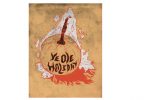Halloween is fun. At every age people can enjoy the simple pleasures the October holiday has to offer: Children receive candy, adults can dress up children in cute costumes, and teenagers can experience a night when it’s socially acceptable to commit vandalism.
Now is the best time in history to celebrate Halloween.
According to the History Channel, Halloween’s origin can be traced back to the ancient Celtic holiday, Samhain. The Celts celebrated their new year on Nov. 1 when harvest ended and the cold winter months started. Because winter was associated with death, the Celts believed the boundary between the living and dead was blurred on this night.
The connection between the living and the dead spurred some of the spooky traditions still seen today such as costumes and bonfires, and some traditions that have sadly fallen by the wayside, like animal sacrifices.
When the Romans conquered Celtic lands by 43 A.D., they incorporated several of their festivals into Samhain. One of them included a celebration honoring Pomona, the Roman goddess of fruit and trees. Pomona is symbolically represented by an apple, and many people have speculated that bobbing for apples originates from this. (Although my friend Tommy’s mom swears she came up with it).
Eventually the holidays combined to form All Saints and All Souls Day on Nov. 1 and 2. This is widely seen today as an attempt by the Catholic church to replace the Celtic festival of the dead.
By 1556, Allhallowtide—the three days spanning the eve of All Saints Day to the end of All Souls Day—had become a widely recognized holiday in Europe. During the course of the three days people mourned the dead. Sweets called soul cakes were given out in memory of the deceased.
An early form of the trick or treating began during this time. This event was called “souling” and involved peasants going door to door begging for food in return for prayers towards the donors deceased loved ones.
Halloween slowly came to America in the 1700s. Due to the rigid Protestant belief system, celebration in New England was relatively limited. The holiday was more popular in southern states where a more mixed group of beliefs and European ethnicities led to a more distinct American version of Halloween.
An influx of Irish immigrants in the second half of the nineteenth century helped popularize the holiday nationally. By the late 1800s there was a movement in the United States to make Halloween a more communal holiday and less of a night of mischief.
Today, Halloween is in its prime. Far removed from its Celtic and Christian roots, the holiday has taken on new significance as a night when adults and children alike can dress however they want and let their hair down.
Sure, there’s always the risk of costume gaffe (just type Hillary Duff Racist into google), sugar shock, and long term diabetes, but what good holiday doesn’t give you those opportunities?
We live in the best time for Halloween: If this were 1000 years ago most of us would be walking around offering to pray for people’s leftover gruel.
So enjoy what we’ve got and embrace it. I’ve already started working on my homeless Harry Potter costume for next year.

